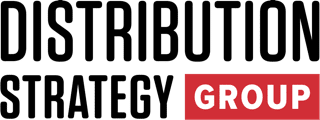The distribution industry continues to navigate complex supply chain disruptions, from Covid aftershocks to tariff uncertainties and unexpected material shortages. A recent panel discussion featuring three experienced distribution leaders revealed how companies across different sectors are adapting their strategies, embracing new technologies, and reimagining customer relationships to thrive in this volatile environment.
The Panelists: Diverse Perspectives Across Industries
The conversation brought together Scott Wagner, Director of Industry Transformation at NAED (National Association of Electrical Distributors); Erika Scherman, President and Owner of MC Tool & Safety Sales; and Diego Fonseca, Vice President of Supply Chain and Logistics at Southern Glazer’s Wine & Spirits.
Wagner brings 35 years of electrical distribution experience, having worked as an electrician, at manufacturers, and across three major distributors before joining NAED. Scherman leads a specialized distributor serving municipalities and construction companies with power tools and personal protective equipment. Fonseca oversees inbound supply chain operations at the nation’s largest alcohol beverage distributor, managing everything from European wine imports to domestic logistics.
Current Supply Chain Realities: Beyond Recovery Mode
The Electrical Industry: Fear and Protective Behaviors

Wagner describes an industry still grappling with the psychological impact of past disruptions. “We’re all still feeling the impacts of challenges in the past,” he noted. “The fear of more disruption is always there, especially with what’s been talked about with tariffs and other supply chain challenges.”
The electrical industry learned hard lessons about supplier concentration when something as basic as lugs created widespread equipment shortages. “You wouldn’t think just a little piece of metal you could make in your garage could cause that much disruption,” Wagner said. This experience led to behavioral changes, including protective scheduling and padding throughout the supply chain.
Tools and Safety: Pricing Volatility as the New Normal

Scherman faces a different but equally challenging reality in the tools and safety sector. “The unpredictability of pricing” has become her biggest concern. Vendors now issue prices with immediate-change clauses, making it nearly impossible to provide customers with reliable quotes beyond 30 days.
“You used to be able to know your prices for the next 6, 8, 12 months,” Scherman explained. “Now when I’m working on margins that average 32 to 37 percent, sometimes way less, a 10, 20, or 30 percent price increase can completely eliminate profitability.”
The uncertainty extends beyond pricing to project execution. Contractors are increasingly hesitant to commit to projects, making it difficult for distributors to order inventory in advance to lock in pricing.
Wine and Spirits: Balancing Long Lead Times with Demand Volatility

Fonseca manages unique challenges in an industry with exceptionally long lead times and strict regulatory constraints. “We have lead times from Europe, from Japan, from New Zealand,” he said. “With vintages and things that have to be produced years in advance, managing the right vintage transitions and inventory levels across thousands of SKUs is a tough balance.”
The industry is still adjusting volume expectations post-Covid, trying to distinguish between genuine consumer behavior shifts and temporary market fluctuations. Adding complexity, state-by-state regulations prevent inventory pooling, requiring precise forecasting at the item-state level.
Customer Expectations: The New Transparency Standard
From Value Engineering to Availability Engineering
The pandemic fundamentally shifted how customers approach product selection. Wagner identified a crucial change in the electrical industry: “Prior to Covid, we used to talk a lot about value engineering projects to find ways to make it more economical. Now it’s transitioned to be more about availability.”
This “availability engineering” approach represents a significant behavioral shift where customers prioritize getting products with shorter lead times over achieving the lowest possible price.
Communication as Competitive Advantage
Scherman found that transparent communication has become more valuable than ever. “What Covid did for us was really button down our conversations with our suppliers, so I can give accurate timeframes,” she said. “I’m not afraid to suggest they go to a competitor if that’s what they need for their business, because I’m protecting that relationship.”
This level of transparency, once potentially viewed as competitive weakness, now strengthens customer relationships by demonstrating genuine partnership over short-term sales gains.
Technology Solutions: From Visibility to Artificial Intelligence
Moving Beyond Track and Trace
Fonseca distinguishes between basic supply chain visibility and actionable intelligence. “Visibility has different components. You can think about track and trace like where’s my load, where’s my container. But one of the main things we’re trying to build is visibility around alerts of leading issues instead of lagging issues.”
His team is developing control towers that provide department-specific alerts, enabling proactive rather than reactive supply chain management. “If you just do reactive supply chain, more than half of your team is chasing what happened yesterday, and you’re never able to focus on medium and long-term planning.”
AI Implementation: Practical Results
Southern Glazer’s achieved measurable success with machine learning forecasting models, seeing a “more than 5 percentage points improvement year over year” in forecast accuracy. Fonseca emphasized the dual benefit: “It’s basically a double win, both on accuracy and predictability, and it frees up time for people to focus on discussions that need more detail and manual input.”
Small Company AI Strategy
Scherman approaches AI adoption with careful pragmatism suited to smaller operations. “The cost of implementing something I don’t know is going to work can be prohibitive when you’re a small company,” she said. Her strategy focuses on bite-sized implementations that can build upon each other without disrupting current processes.
Quote and Order Automation: The Leading AI Application
Wagner identified quote and order automation as the most successful AI application in electrical distribution. “There are tools that address the long learning curve for counter sales roles, which takes two years or more for someone to really get up to speed and be effective.”
These systems help newer employees provide accurate, complete orders while enabling cross-selling opportunities. However, implementation faces resistance from experienced staff who may view AI as threatening their expertise.
“I hear people say they’re worried AI will replace them,” Wagner noted. “The real truth is your competitor using AI may replace you with your customer if you don’t use it first.”
Preparing for Continued Uncertainty
Tariff Management Strategies
Distributors are taking varied approaches to tariff uncertainty. Scherman works with vendors who proactively shifted manufacturing locations, while Wagner sees increased focus on data-driven decisions rather than emotional purchasing behaviors.
“Everyone is grasping for understanding,” Wagner said. “The awareness that things are changing in a very dynamic environment leads to hopefully better, more informed decisions using data rather than gut instinct.”
Strategic Priorities: Technology and Change Management
Looking ahead 12 to 18 months, the panelists identified several key priorities:
- Technology Development and Adoption: Fonseca emphasized the importance of successful pilot programs to build organizational momentum for AI initiatives. “It’s very important to not outsource your AI strategy. Those firms are never going to understand your business as well as you understand it.”
- Incremental Implementation: Scherman plans to adopt AI in “bite-size chunks” during slower seasons, building a hierarchy of applications that complement each other.
- Industry Collaboration: Wagner highlighted NAED’s “Where’s My Stuff?” initiative, bringing together contractors, distributors, manufacturers, and reps to create connected information flows across the industry.
Key Takeaways for Distribution Leaders
- Embrace Transparency as Strategy: Today’s customers value honest communication about availability and timing over optimistic promises that can’t be kept.
- Invest in Leading Indicators: Move beyond reactive supply chain management by developing systems that identify potential problems before they become crises.
- Start Small with AI: Begin with pilot programs that demonstrate clear value, building organizational confidence and momentum for broader implementation.
- Focus on Change Management: Technology adoption requires dedicated time and leadership involvement to ensure successful integration with existing business processes.
- Prepare for Continued Volatility: Build flexibility into forecasting, pricing, and inventory strategies while maintaining data-driven decision-making processes.
The distribution industry’s response to supply chain challenges reveals a sector in transition, moving from traditional reactive approaches toward more sophisticated, technology-enabled strategies. Success requires balancing the urgency of immediate operational needs with the patience necessary for thoughtful technology implementation and organizational change management.
As these industry leaders demonstrate, the companies thriving in today’s volatile environment are those that view supply chain challenges not just as problems to solve, but as opportunities to fundamentally improve how they serve customers and operate their businesses.
To listen to the entire webinar “How Distributors Are Solving Supply Chain Challenges” click here.
